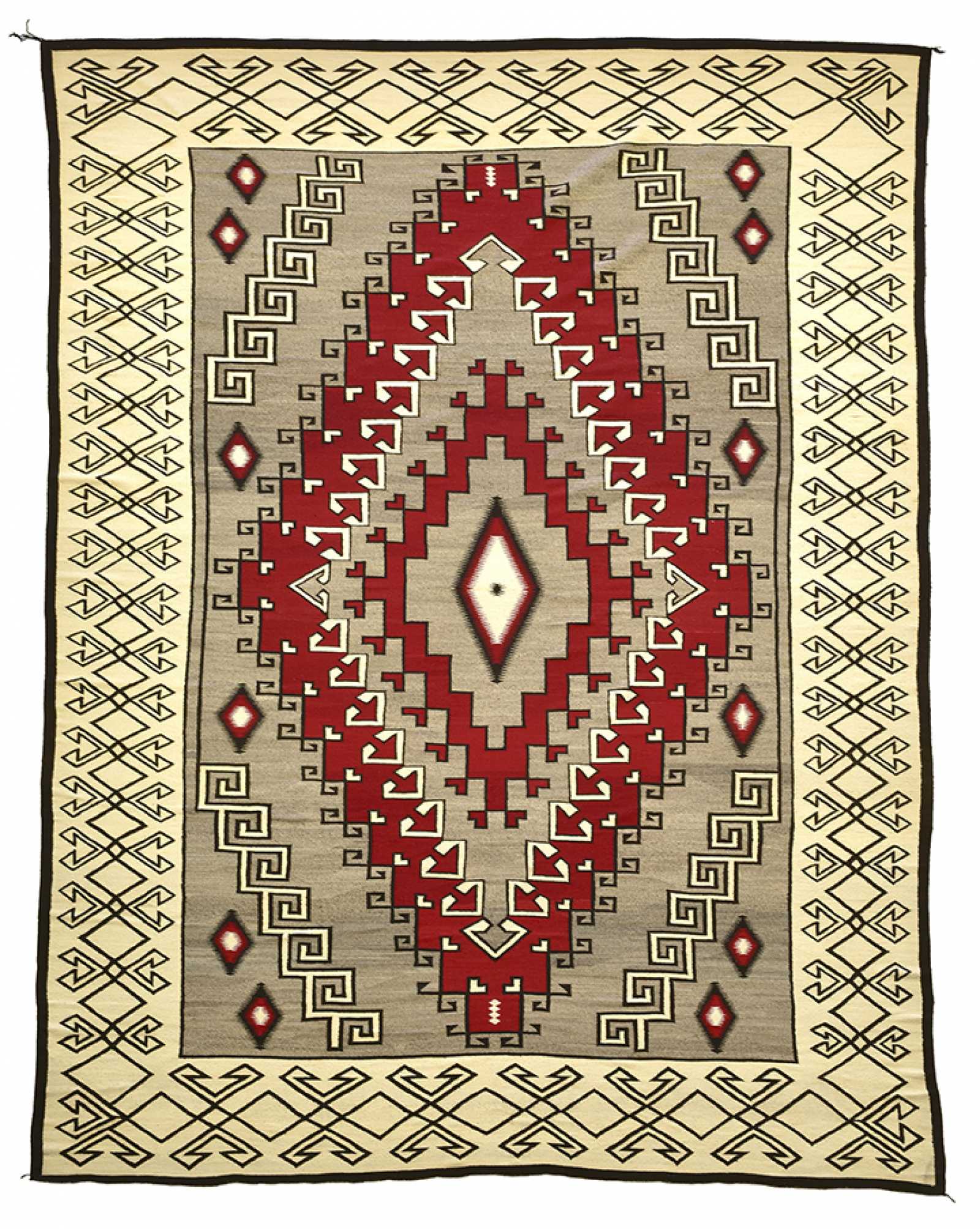Navajo Klagetoh Rug
Through tradition, adaptation, and innovation, Southwest weaving styles have evolved over the past 2,000 years from a complex blend of multi-cultural influences derived from Pueblo, Navajo, Spanish-American, and Euro-American weaving traditions. During the mid-sixteenth century, Spanish colonialists introduced Churro sheep into the area and wool replaced cotton as the preferred weaving material of Pueblo and Navajo weavers.
The Rug Period (1890-1930) replaced the Blanket and Transitional Periods (1700-1890), and coincided with the emergence of the Arts and Crafts movement in America. A number of regional rug styles evolved, including Ganado, Crystal, Klagetoh, and Two Grey Hills, to name a few. The Klagetoh regional style combines natural carded wools (black, white, tan) with red dyed designs as in this example. The bold central red design surrounded by a broad, complex geometric patterned border recalling ancient southwest pottery designs are also characteristic elements of the Klagetoh style.
The production of large-scale rugs such as this one requires tremendous effort and can take up to three years or more to complete. Further, it requires construction of a special loom that can support such a large-scale, heavy weaving. Given the time and commitment needed to complete such a project, few textiles on this scale were produced, and museums are the primary institutions with the resources to preserve and exhibit these unique treasures.
Artist Unknown, Navajo Klagetoh Rug, c. 1930, natural wool and aniline dye (red), 20 feet, 8 inches. x 13 feet, 3 inches. Gift of Stephen H. Field, R2017.12.

